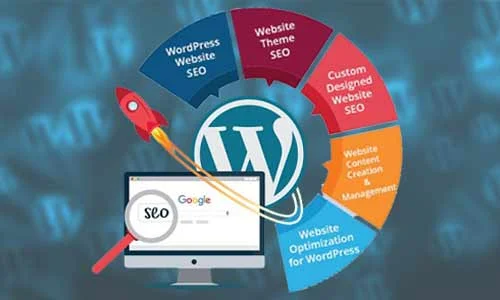In the dynamic landscape of logistics and supply chain management, the role of Transportation Management Systems (TMS) has become increasingly pivotal. As businesses expand globally and e-commerce continues to surge, the efficient movement of goods from suppliers to customers has emerged as a critical factor for success. In this comprehensive guide, we will delve into the world of Transportation Management Systems, exploring their functionalities, benefits, implementation strategies, and the future outlook.
Table of Contents
- Introduction to Transportation Management Systems (TMS)
- Evolution and Historical Overview of TMS
- Key Components and Functionalities of TMS
- Benefits and Advantages of Implementing a TMS
- Implementation Strategies and Best Practices
- TMS in Different Industry Sectors
- Future Trends and Innovations in TMS
- Challenges and Limitations of TMS
- Conclusion: The Role of TMS in Shaping Future Logistics
1. Introduction to Transportation Management Systems (TMS)
Transportation Management Systems (TMS) refer to software solutions designed to facilitate the efficient planning, execution, and optimization of transportation processes in supply chains. These systems provide end-to-end visibility and control over various transportation-related activities, such as route planning, carrier selection, freight audit, and performance analytics.
TMS software serves as a centralized platform that integrates with other supply chain management systems, enabling businesses to streamline their logistics operations and make data-driven decisions for cost reduction and enhanced customer satisfaction.
2. Evolution and Historical Overview of TMS
The origins of TMS can be traced back to the 1960s when rudimentary computer systems were first employed for logistics and transportation purposes. However, the real development and sophistication of TMS began in the late 20th century with the advancement of technology and the internet.
During the 1990s and early 2000s, TMS underwent significant transformations, evolving from standalone, on-premises solutions to web-based systems. This shift allowed for greater accessibility, scalability, and connectivity with external partners, carriers, and suppliers.
3. Key Components and Functionalities of TMS
a. Order Management
TMS typically includes order management functionalities that allow businesses to consolidate orders, optimize loads, and efficiently plan shipments based on various parameters such as delivery windows, customer preferences, and carrier capacities.
b. Route Optimization
Efficient route planning and optimization are crucial for reducing transportation costs and improving delivery times. TMS utilizes algorithms to identify the most cost-effective and time-efficient routes, considering factors like traffic conditions, fuel costs, and vehicle capacities.
c. Carrier Management
TMS facilitates the selection and management of carriers by evaluating their performance metrics, negotiating contracts, and ensuring compliance with regulations. It enables seamless communication and collaboration between shippers and carriers.
d. Freight Audit and Payment
Automated freight audit and payment features within TMS help in verifying carrier invoices, identifying discrepancies, and ensuring accurate payments. This functionality streamlines financial processes and minimizes billing errors.
e. Real-time Visibility and Tracking
Real-time tracking capabilities enable stakeholders to monitor shipments’ status, location, and estimated time of arrival (ETA). This visibility enhances transparency across the supply chain and allows proactive decision-making to address potential disruptions.
f. Analytics and Reporting
TMS provides robust analytics and reporting tools that offer insights into transportation KPIs, performance metrics, and cost analysis. These data-driven insights empower businesses to optimize strategies and make informed decisions.
4. Benefits and Advantages of Implementing a TMS
The adoption of a Transportation Management System offers a multitude of benefits to organizations across various industries:
a. Cost Reduction
By optimizing routes, consolidating shipments, and improving carrier selection, TMS helps in minimizing transportation costs, including fuel expenses and labor costs.
b. Enhanced Efficiency and Productivity
Automation of manual processes and streamlined workflows lead to increased operational efficiency and productivity. TMS eliminates redundant tasks, reducing human errors and accelerating processes.
c. Improved Customer Service
Efficient logistics and timely deliveries result in improved customer satisfaction. TMS enables accurate tracking and ETA predictions, allowing businesses to provide better service and meet customer expectations.
d. Data-Driven Decision Making
Access to comprehensive data and analytics empowers businesses to make informed decisions. TMS-generated insights aid in identifying inefficiencies and optimizing transportation strategies.
e. Compliance and Risk Mitigation
TMS assists in ensuring regulatory compliance and mitigating risks by monitoring carrier performance, adhering to industry standards, and enhancing security measures.
5. Implementation Strategies and Best Practices
Successful implementation of a Transportation Management System involves careful planning and execution. Here are some key strategies and best practices:
a. Assess Business Requirements
Understand the specific needs and objectives of your organization before selecting a TMS solution. Consider factors like shipment volume, geographic scope, and integration capabilities.
b. Collaborate with Stakeholders
Involve all relevant stakeholders, including supply chain partners, IT teams, carriers, and end-users, in the implementation process. Collaboration ensures alignment of goals and smooth integration.
c. Choose the Right TMS Solution
Evaluate different TMS vendors and solutions based on functionality, scalability, ease of integration, user interface, and customer support. Select a solution that aligns with your business goals and requirements.
d. Conduct Comprehensive Training
Provide thorough training sessions to users to ensure they can leverage the TMS effectively. Training enhances adoption rates and maximizes the system’s potential.
e. Continuous Evaluation and Optimization
Regularly assess the TMS performance and gather feedback from users to identify areas for improvement. Continuous optimization ensures the system evolves with the changing needs of the business.
6. TMS in Different Industry Sectors
The application of Transportation Management Systems transcends industry boundaries and caters to diverse sectors:
a. Retail and E-commerce
In the retail sector, TMS aids in managing complex distribution networks, optimizing last-mile deliveries, and meeting customer demands for faster shipping.
b. Manufacturing
Manufacturing companies benefit from TMS by efficiently transporting raw materials, managing inventory levels, and orchestrating outbound shipments to distribution centers or retailers.
c. Consumer Goods
TMS helps consumer goods companies in managing seasonal demands, optimizing transportation routes, and ensuring timely deliveries to retailers and customers.
d. Healthcare and Pharmaceuticals
In the healthcare industry, TMS plays a crucial role in maintaining temperature-controlled shipments, managing regulatory compliance, and ensuring the timely delivery of critical medical supplies.
e. Automotive and Transportation
For automotive and transportation companies, TMS assists in managing complex supply chains, coordinating inbound and outbound logistics, and optimizing vehicle movements.
7. Future Trends and Innovations in TMS
The evolution of Transportation Management Systems continues, driven by technological advancements and changing market dynamics. Several emerging trends are shaping the future of TMS:
a. Integration of AI and Machine Learning
AI and machine learning algorithms are increasingly integrated into TMS to enhance predictive analytics, optimize route planning, and provide real-time decision support.
b. Blockchain Integration for Supply Chain Transparency
The integration of blockchain technology in TMS ensures greater transparency, traceability, and security in supply chain transactions and documentation.
c. Internet of Things (IoT) for Enhanced Tracking
IoT-enabled sensors and devices offer real-time visibility into cargo conditions, enabling better monitoring of shipments’ temperature, humidity, and security.
d. Sustainability and Green Logistics
TMS is evolving to support sustainability initiatives by optimizing routes for reduced carbon emissions, promoting eco-friendly transportation modes, and fostering green logistics practices.
e. Autonomous Vehicles and Drone Deliveries
The adoption of autonomous vehicles and drones for last-mile deliveries is expected to integrate seamlessly with TMS, revolutionizing logistics operations.
8. Challenges and Limitations of TMS
While Transportation Management Systems offer numerous benefits, they also come with certain challenges and limitations:
a. Implementation Complexity
The implementation process of TMS can be complex and time-consuming, requiring significant investments in resources, infrastructure, and training.
b. Integration with Legacy Systems
Integrating TMS with existing legacy systems and diverse IT landscapes can pose compatibility issues and require extensive customization.
c. Data Security and Privacy Concerns
The handling of sensitive data within TMS raises concerns about data security, privacy, and the risk of cyber threats.
d. Scalability and Flexibility
Scaling TMS to accommodate business growth and adapting to changing market demands may require continuous upgrades and modifications.
e. Adoption and User Resistance
Resistance to change and user adoption challenges might hinder the successful implementation and utilization of TMS within organizations.
9. Conclusion: The Role of TMS in Shaping Future Logistics
Transportation Management Systems have emerged as indispensable tools for optimizing logistics and supply chain operations. Their ability to streamline transportation processes, enhance visibility, and drive cost efficiencies makes them critical components for businesses navigating the complexities of modern-day logistics.
As technology continues to evolve, TMS will undergo further innovations, incorporating advanced features like AI, IoT, and blockchain to revolutionize the way goods are transported and managed. However, addressing challenges related to implementation complexity, data security, and user adoption will be essential for organizations aiming to leverage the full potential of TMS.
In conclusion, the strategic adoption and effective utilization of Transportation Management Systems will be instrumental in shaping the future of logistics, enabling businesses to stay competitive, resilient, and responsive to the ever-changing demands of the global marketplace.
Read more :- Maintain the Stability and Style with Aluminum Door Repairs





